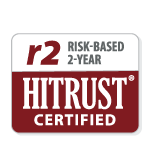Some of the top challenges affecting health systems’ reimbursement involve physician credentialing and provider enrollment. Enrollment with various payors in multiple states can be a tedious process—and few hospitals are staffed sufficiently to onboard, credential, and enroll new providers. Facilities must also ensure continued credentialing for existing providers and locum tenens, which multiplies the workload.
The process of enrollment involves requesting participation, completing credentialing requirements, submitting supporting documents, and signing a contract. This procedure varies from state to state, and few facilities have the bandwidth to ensure proper enrollment with out-of-state payors.
Facing so many hoops to jump through, facilities are left juggling expectations to ensure nothing prevents reimbursement. In many cases, hospitals track credentialing and enrollment manually, often using cumbersome spreadsheets. This places significant responsibility on already-busy staff members who must determine expiration dates, identify missing information, and notify everyone of changes in requirements.
Without a dedicated team to oversee provider enrollment, hospital systems struggle to manage the multitude of requirements. Contact us to see how you can eliminate the most pressing pain points.
In an effort to centralize information, the Council for Affordable Quality Healthcare, Inc. (CAQH) developed the CAQH ProView Database, which serves as a central repository where physicians can self-report necessary information and payors can collect it. However, keeping this database updated is crucial—and heightens complexity for hospital staff members who are already overloaded with internal documentation.
If anything is overlooked during the credentialing and enrollment processes, claims will be denied regardless of whether or not they were filed correctly. According to the Journal of Urgent Care Medicine, some of the top reasons for credentialing denials are:
- Payor credentialing verifications that do not match what was documented and submitted on the provider application
- Provider failing to release sanctions, limitations, or adverse actions
- Payor unable to verify completion of training program
- Medical malpractice cases showing a trend in clinical negligence
- Misunderstanding leading to a mistaken denial
When providers aren’t properly credentialed and enrolled with payors, any claim submitted with their name on it will be denied—which can lead to millions of dollars in lost revenue. Instead of risking those dollars, many facilities choose to outsource their provider enrollment so they can spend more time focusing on the credentialing process and alleviate their staff of unnecessary burdens.
When you partner with Aspirion, our dedicated, knowledgeable staff will keep you apprised of changes to payor requirements, enabling you to stay on top of your responsibilities—and you get access to industry-leading credentialing software that provides enhanced reporting and tracking.
Don’t let provider enrollment processes overwhelm you—free your staff to focus on credentialing, onboarding, privileging, and more by reaching out to our team today..

%20(1).png?width=116&height=115&name=Best%20in%20KLAS_2024_116x115%20(002)%20(1).png)
%20(1).png?width=116&name=Best%20in%20KLAS_2024_116x115%20(002)%20(1).png)
